Live Science Verdict
Purpose built as an entry-level binocular, the Nikon Prostaff P3 is a roof prism design that lends itself well to casual observers or hobbyist wildlife spotters thanks to its slim profile. Nikon has packed some fantastic optics in these binoculars which rival competitor binos in higher price brackets but the accessories they ship are cheap to the touch.
Pros
- +
Awesome high-end feel to touchpoints
- +
Supreme optical quality for a binocular at this price
- +
Can slip into a jacket pocket thanks to the slimline design
Cons
- -
Lens caps and neckstrap lack quality
- -
Fiberglass-reinforced polycarbonate resin body
Why you can trust Live Science
The Nikon Prostaff P3 binocular line is a series of four entry-level binoculars aimed at an audience who wants Nikon-quality optics but at beginner prices. The P3s come in 8x30, 8x42, 10x30 and 10x42 versions and we’re reviewing the 8x42s because they sit roughly in the middle of the four models price-wise.
Their resin body is coated in a rubberized armor and all the controls work smoothly with a confident tension in the focus wheel and hinge to hold firm when needed. They sit at the bottom of Nikon’s pyramid of binoculars with the P7 range slightly above the P3 and the Monarch line well at the top featuring the very best binoculars Nikon can produce.
With an MSRP of $139.95, the Prostaff P3s will appeal to beginner wildlife spotters, birdwatchers and aviation enthusiasts who want to buy a pair of binoculars where most of the manufacturing cost has been spent where it counts: on the optics. They'd also be great binoculars for kids if your young spotters are enjoying the hobby and are ready for an upgrade.
Those who wear eyeglasses will be relieved to hear that the Prostaff P3s’ eye relief is good enough that you shouldn’t need to remove them. This said, there are things about the Prostaff P3 binoculars that leave us wanting more, likely in a bid for Nikon to keep the cost down, rather than purposefully making anything inferior. So if premium quality all-round is important to you, you may want to peek at the Monarch line, instead.
Nikon Prostaff P3 8x42 binocular: Design
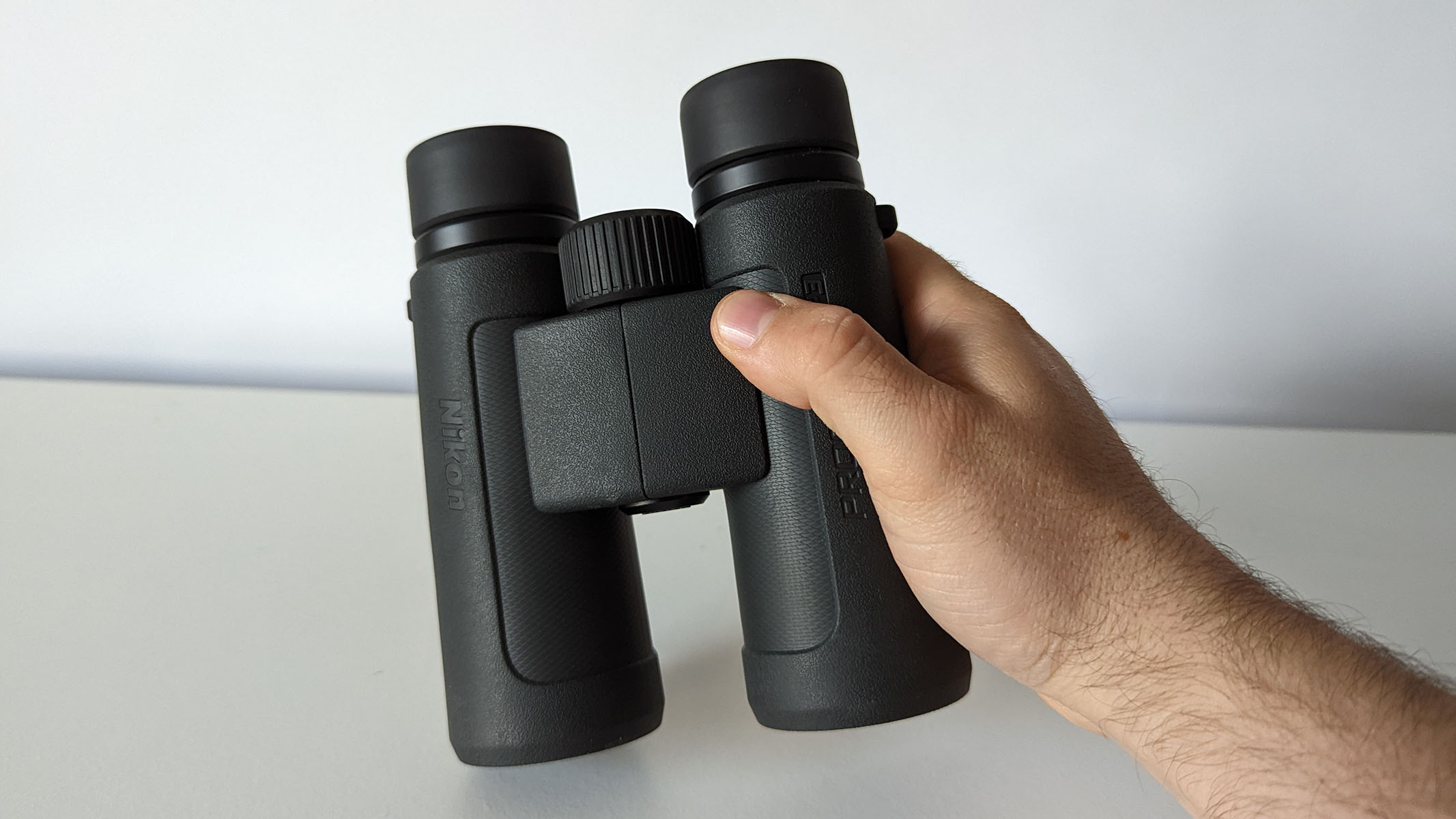
- Wide 42mm objective lenses good for low light
- Premium-grade eyecup adjustments
- Waterproof and fogproof
Color us impressed because the Nikon Prostaff P3 8x42 binoculars have fantastic optics for the money. The lenses are treated with multilayer coatings and the prism inside the binoculars is coated with a silver-alloy prism to retain brightness throughout. The 42mm objective lenses on the model that we’ve reviewed here drink in the light and happily gave us good viewing into early twilight so birders and wildlife hunters don’t have to pack away the moment the sun hits the horizon.
Stand-out features are surely the adjustable eyecups, the focus wheel, and the hinge. A solid clunk as the eyecups are adjusted for suitable eye relief is felt every time they are adjusted into one of three positions. While those new to binoculars won’t be aware of how good this is, know that when directly compared with the Monarch HG binoculars, it feels almost identical. Considering the P3s cost around a tenth the price of the Monarch HGs this is wholly impressive. The focus wheel is smooth and holds just enough tension that it doesn’t drift out of focus when accidentally nudged. The same is true for the hinge which feels strong and durable.
The binoculars are fog-proof because they’ve been purged with Nitrogen gas. They’re also waterproof up to 1m for up to 10 minutes which is helpful if you drop them in a lake or get caught out in the middle of a rain storm.
Sadly, there are some spots where the package is let down - likely due to the low price Nikon is trying to hit. Take a look at the lens caps for the objective lenses and you’ll see there’s a thread space to tie them onto the neckstrap or similar, but they do not clasp to the binoculars like more expensive Nikon models do. This is a little disappointing because we know that competitor models in this price range do have that. The neckstrap is also quite thin and this can become a pain in the neck (literally) when wearing them for long durations.
Nikon Prostaff P3 8x42 binocular: Performance
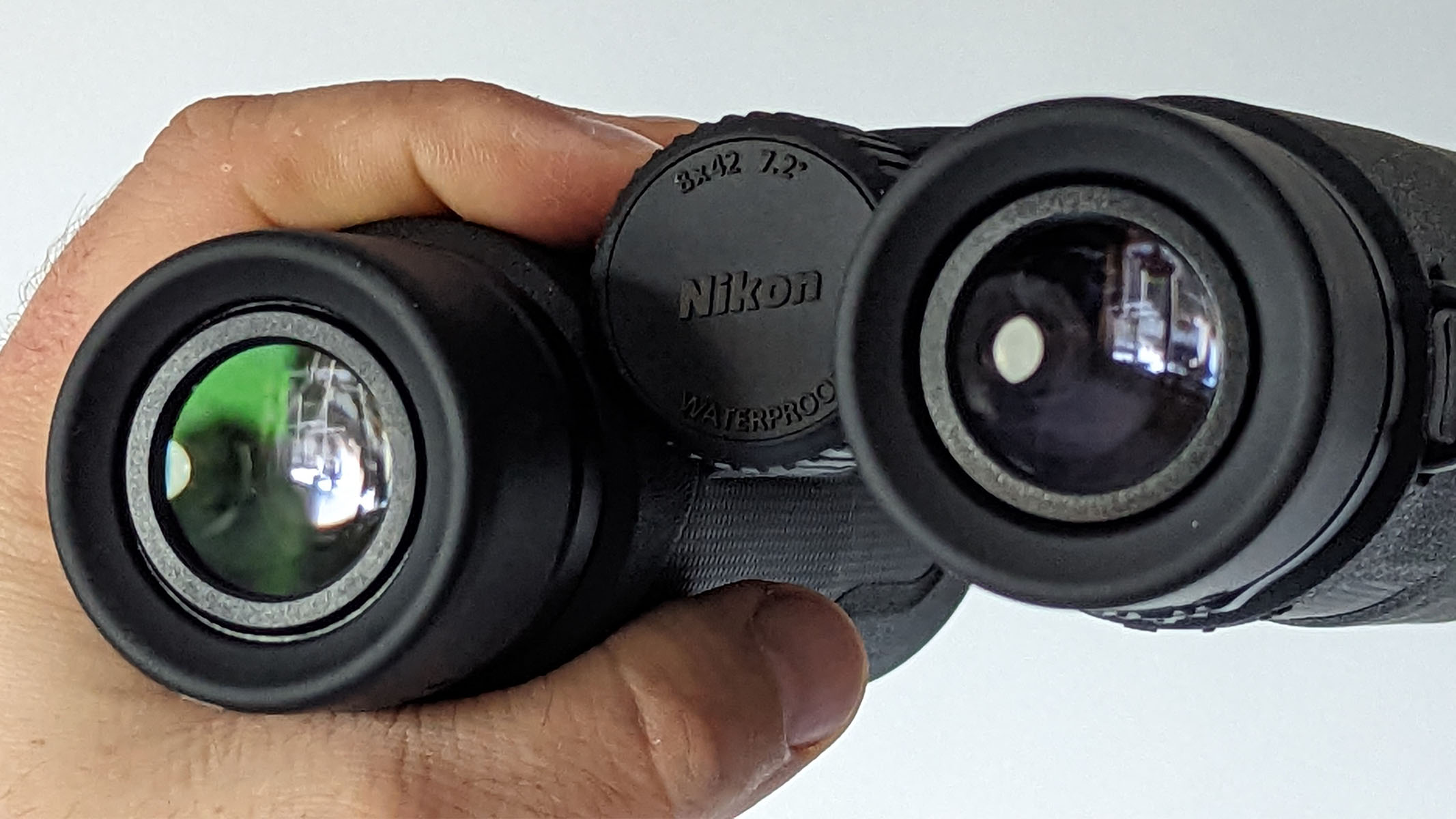
- A little softness around the edges whilst viewing
- Pin-sharp otherwise, especially in center of image circle
- Some chromatic aberration but doesn't affect use
We’re beyond pleased with the optical quality of the Prostaff P3 glass. It’s clear to see Nikon focusing their attention to this area of the binocular’s construction (quite rightly) because the view is pin-sharp and plenty bright enough. The 15.4mm eye relief needs to be adjusted based on the set of your eyes and whether you wear eyeglasses or not, but once this is done, and the diopter ring is set, there’s little to dislike.
If we’re splitting hairs, and let’s face it - this is what you’ve come to our review for, the optics do suffer from some softness around the edges (which you can only see with your peripheral vision). There is also some chromatic aberration which leaves pink fringes (and occasionally green fringes) around most contrasted edges. Though, we doubt that most buyers will notice this sort of minor technical issue. Also, the chromatic aberration isn’t even as bad as many other competitors’ entry-level models so this shouldn’t put you off purchasing them.
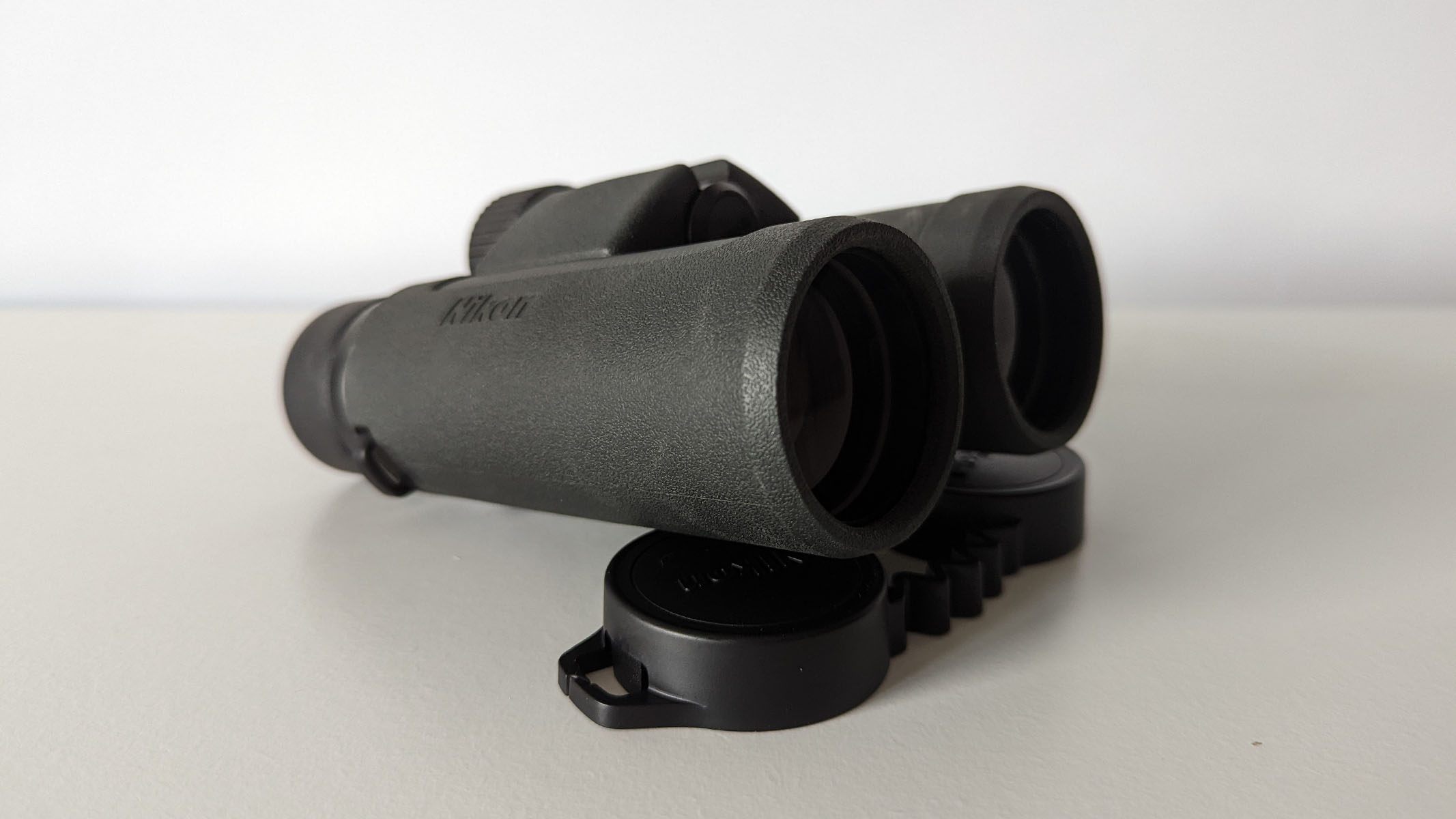
There’s also the 3mm exit pupil which restricts views a little but again, you’ll only notice this if you’re used to more expensive, luxurious binoculars that feature the best of the best. You can tell that these binoculars have quality where it counts though. Put them in a carry case and we bet you’ll pull them back out with exactly the same hinge width as they went in with, meaning that you can get observing straight away. Something that can’t be said for other binoculars whose hinges are weak and easily knocked.
The only thing we were truly disappointed with was the eyepiece covers. They feel like a cheaper plastic and don’t fit snugly on the eyepieces at all unless the hinge is pulled together. Placed wider in their natural setting the covers are so loose that, if held upside down and with a little wiggle, they’ll drop right off. If the diameter of the eyepiece covers were even just 0.5mm smaller we think this problem would be solved. But would wear over time bring the issue back up again? Only time will tell.
Nikon Prostaff P3 8x42 binocular: Functionality
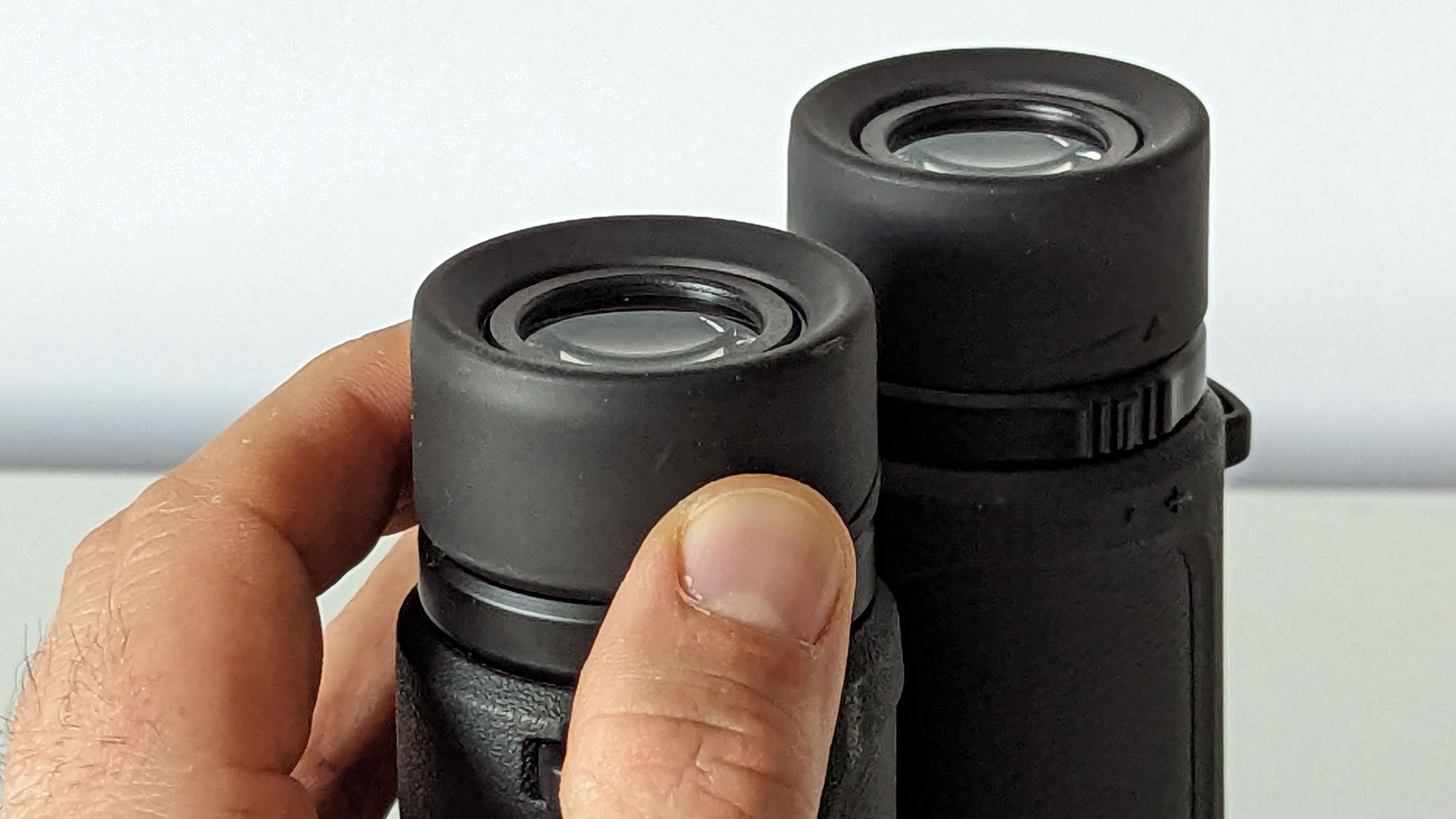
- Compact roof prism design and very light
- Soft rubber coating protects body of binoculars
- Doesn't have locking diopter ring of Nikon's P7 and Monarch lines
Despite the body being made entirely of fiberglass-reinforced polycarbonate resin (a very strong plastic) they do feel like they could be made from some kind of metal alloy. They weigh 1.02lbs / 465g though and have a small, narrow shoulder line that easily squeezes into large jacket pockets or the carry case provided. This makes them a dream to carry around all day, easily tucked away when not in use.
The P3s are protected by a rubber coating which gives an excellent texture to hold onto, even in wet or cold weather. However, there is a little sponginess to the binoculars which is reminiscent of cheaper Nikon DSLR lenses which, from experience, we’ve known to come loose over time. Even if this sponginess were to get worse (we haven’t tested this yet) then we’re confident it wouldn’t be an issue because they are sealed all around.
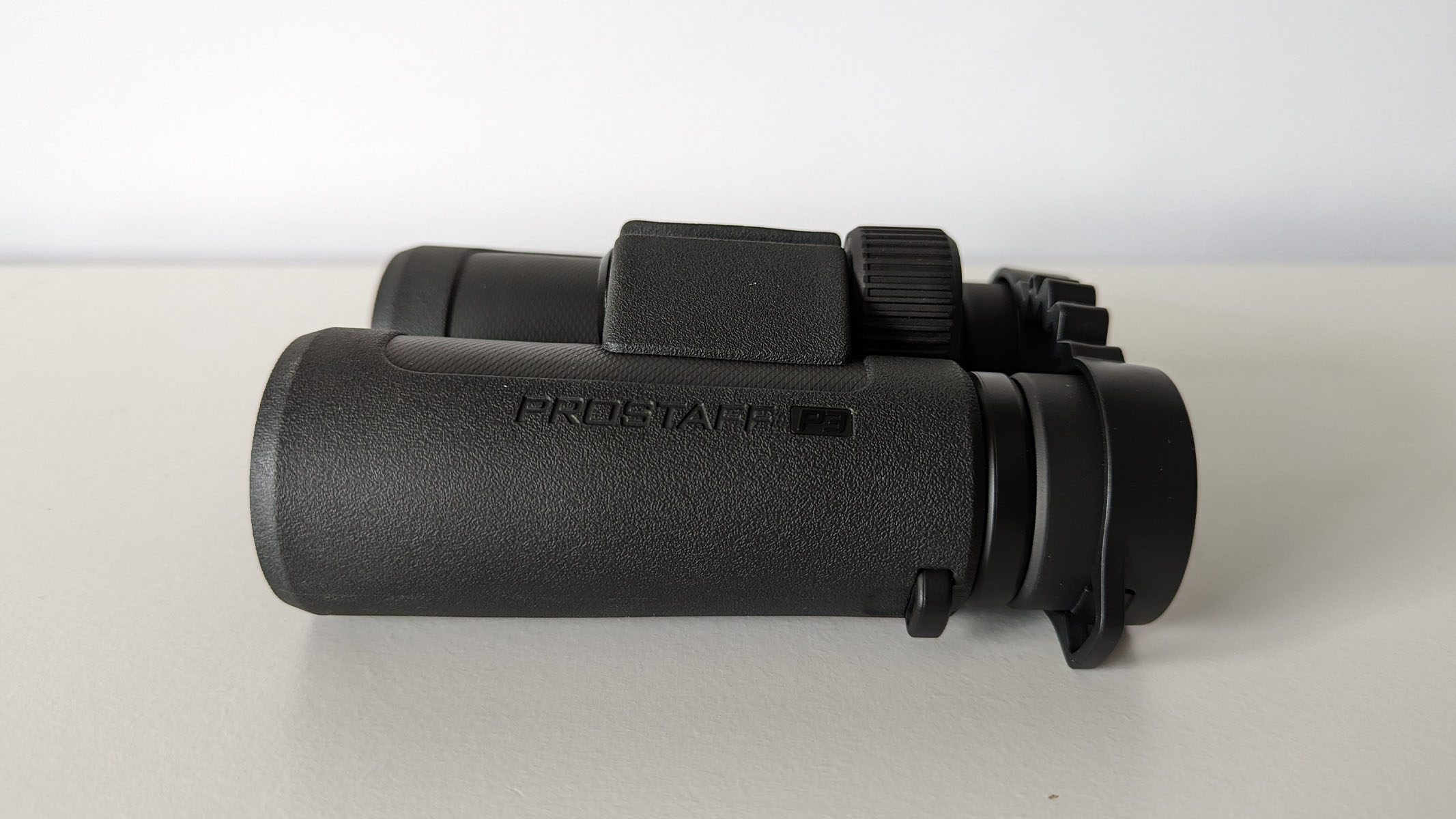
Changing the diopter ring for separate eye focusing is about as standard as it gets, and it doesn’t slip while in use so taking the binoculars in and out of the carry case won’t present any issues. If this a particular bugbear of yours though take a look at the Prostaff P7 which features a locking diopter ring that can’t be knocked even when handled roughly.
Should I buy the Nikon Prostaff P3 8x42 binoculars?
Overall, if you’re looking for a pair of entry-level binoculars and are working to a budget but want quality where it counts (in the optics) then the Prostaff P3s are a great option. Some other nice finishes around the binocular body as well make it a lightweight and portable binocular that should last you for years to come.
The lens caps, neckstrap and carry pouch could be a little better though and actually feel a bit cheap to touch and handle. But we have to be aware that Nikon has to save money in some places and we thank them for not doing that on the optics.
If this product isn't for you
Not all entry-level binoculars like the Prostaff P3 are for everyone. If you want a few extra creature comforts without spending much more then chuck some change at the Prostaff P7s which give a more general higher-quality look. Name badges are now painted, the diopter locks into place and accessories feel ‘upgraded’ in some way. With an MSRP of $189.95 for the 8x42s, you're paying a decent chunk more but you get a lot of nice quality of life features.
Want the very best for your money? We think the Nikon Monarch HG 10x42 show off some of the best binocular optics you can find. Constructed of magnesium alloy they’re built to last for an age. Multilayer coatings on every glass piece (not just the objective and eyepiece lenses as in the P3s) and premium-feeling accessories like a cushioned neckstrap and clasping carry bag all scream quality. The optics are the best we’ve ever tested, too, but with an MSRP of $999.95, they’ll cost you.
While these are great wildlife binoculars, they're not really build for stargazing. If you want a pair of binos to scope out the night sky, check out our guide to the best binoculars for stargazing.

Jase Parnell-Brookes is the Managing Editor for e-commerce for Live Science and Space. Previously the Channel Editor for Cameras and Skywatching at Space, Jase has been an editor and contributing expert across a wide range of publications since 2010. Based in the UK, they are also an award-winning photographer and educator winning the Gold Prize award in the Nikon Photo Contest 2018/19 and named Digital Photographer of the Year in 2014. After completing their Master's degree in 2011 and qualifying as a teacher in 2012, Jase has spent the last two decades studying and working in photography and publishing in multiple areas, and specializes in low light optics and camera systems.











